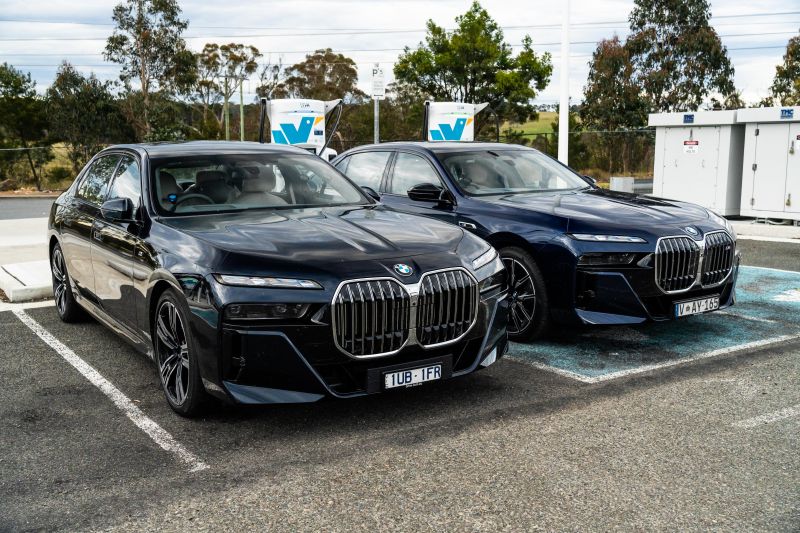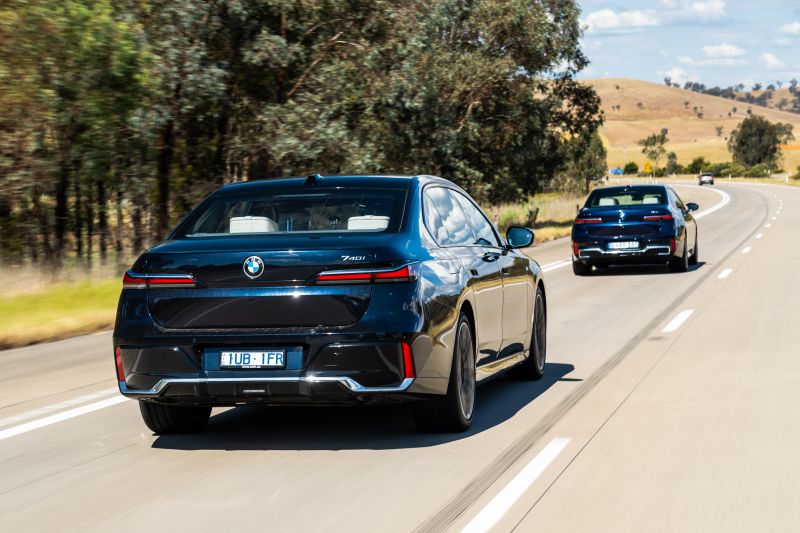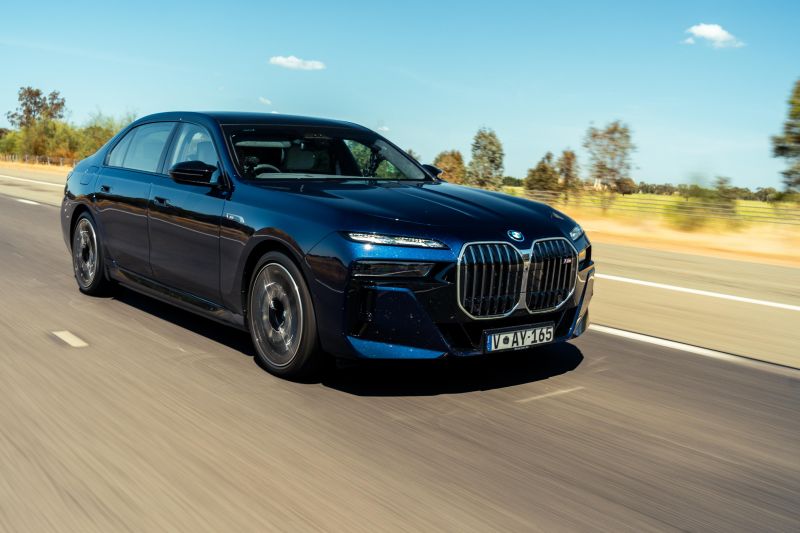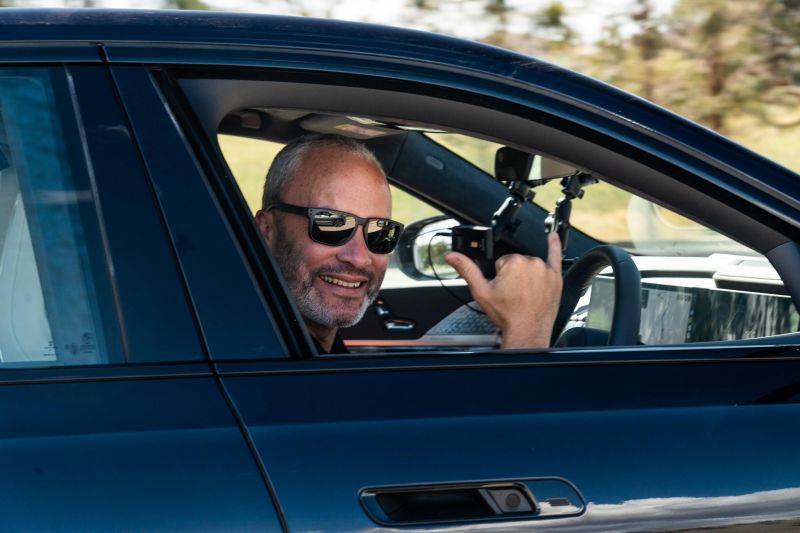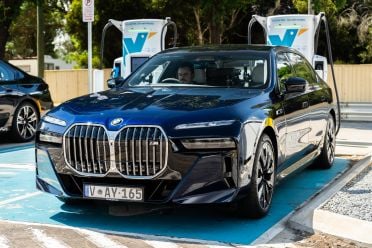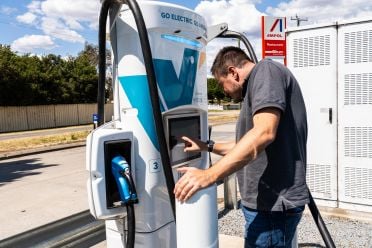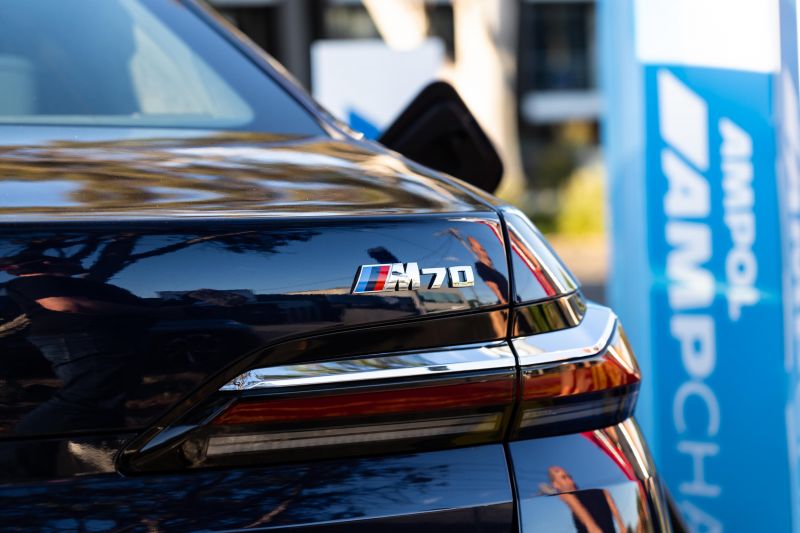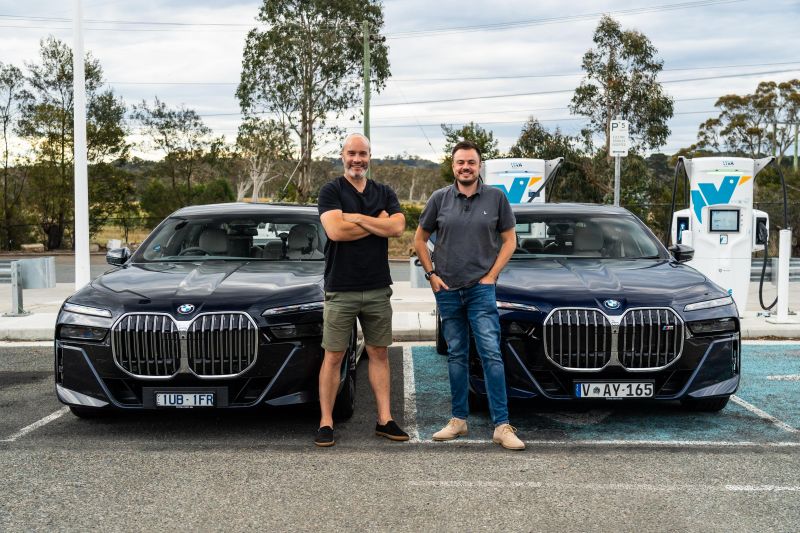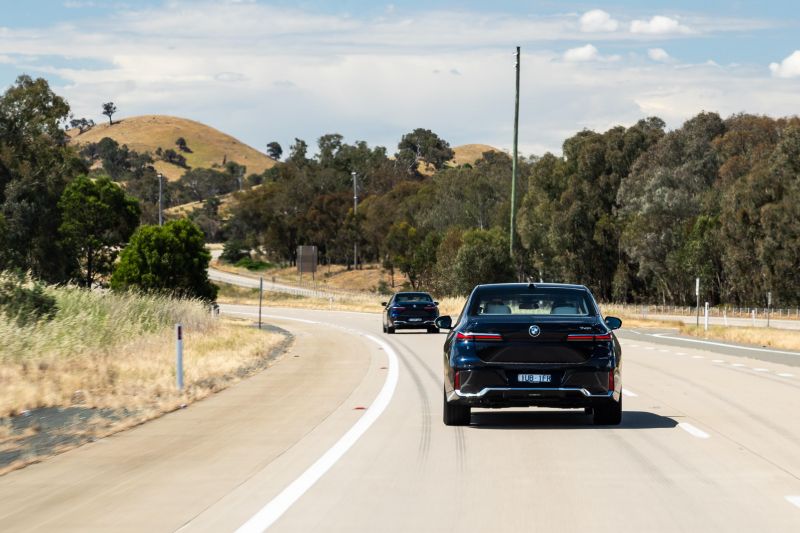With electric car sales exploding in Australia, we wanted to hit the road and see whether it’s still cheaper to drive an electric vehicle in comparison to an internal combustion car.
A little while back we drove a diesel Audi Q5 and an electric Kia EV6 from Adelaide to Sydney over a 1400km road trip to figure out whether you could drive an electric vehicle regionally.
During that trip the diesel Audi was able to complete the 1400km on a single tank of fuel, while the electric vehicle had to stop a number of times. Ultimately, there was just $5 between the cars’ fuelling costs at the end.
But a number of people complained that the cars weren’t equal and weren’t driven equally, given the Audi was driven at a lower speed and they also weren’t the same vehicle.
So we wanted to give it another crack with two identical vehicles driven in the same way across the same distance. This time around I’ve also substituted Alborz for Joe Achilles – a good friend of mine who was over from the UK, and films automotive content on his YouTube channel.
The cars
We were able to secure the all-new BMW 740i and the BMW i7 M70 for our drive from Melbourne to Sydney. It’s a quintessential Australian interstate long distance drive.
The BMW 740i uses a turbocharged six-cylinder petrol engine and tips the scales at 2090kg (kerb), while the i7 M70 uses a twin electric motor setup and tips the scales at 2695kg (kerb).
The i7 uses a 105.7kWh battery and offers a maximum driving range of 560km – we wanted to look to the future where electric cars will offer bigger batteries (in terms of energy density), with driving range an average punter would consider reasonable.
Why did we choose such expensive cars? It was more by chance.
The new 7 Series is one of the few models on the market that offers an electric option with a big battery, and has an internal combustion counterpart. It meant the only difference between the vehicles would be the drivetrains, and mass – an i7 xDrive60 wasn’t available, so we had to settle on the i7 M70.
The vehicles are priced at $344,900 and $272,900 before on-road costs respectively for the electric i7 M70 and petrol 740i. Please disregard the price discrepancy between the vehicles.
It was important for us to have a vehicle with a long driving range and an equivalent internal combustion version. Think ahead to the future where a $50,000 electric vehicle will pack an energy dense battery with similar or greater driving range.
Our ground rules
We wanted to make sure there was no relief for either propulsion type. Both cars were driven at the same speed (to the speed limit) with air conditioning set and cooled seats running. We wanted to replicate the way you would drive if you did this yourself.
Additionally, we wanted to replicate realistic stopping times. You could potentially drive all 900km in one sitting, but it’s not recommended.
We wanted to break every couple of hours for safety, and were aiming for our first charging stop to be at Tarcutta, which is the halfway point between Melbourne and Sydney. Being a road trip, you don’t have the luxury of charging at home where you may have solar or off-peak charge rates.
So we used the public charging network during the drive and also at the end of the drive. Again, you may have charging at your road trip destination or you may not, so to keep it fair we wanted both cars to be filled at the end of the trip to determine total cost.
We would utilise the fastest charger available to us during the trip, and would also fuel the petrol vehicle with the most expensive 98 RON premium unleaded fuel.
The road trip
Both cars left the suburb of Hawthorn in Melbourne, where the EV was charged to 100 per cent and the petrol vehicle was brimmed. We left at around 8am so had to endure peak hour traffic across the city until we hit the highway, bound for Sydney.
The forecast for the day was around 30 degrees, which would move the electric vehicle from its optimum operating temperature of around 22 degrees – although not as bad as the effect would be if we were 10 degrees under the optimum, where efficiency would fall off a cliff.
Our first extended stop (there were a couple of bathroom breaks beforehand) was at Tarcutta in New South Wales, which is around half way between Melbourne and Sydney.
Stop 1: Tarcutta, NSW (450km), 1hr 7 minute stop
We stopped at Tarcutta for lunch. The i7 ended up arriving with just 2 per cent of battery charge remaining. This is despite the original estimate showing a driving range of 557km (about 20 per cent out).
The added drama to this stop was that we were driving on the day of the national Optus network outage. That outage knocked out a number of chargers around the country, affecting the Evie network, which was our charging source at Tarcutta.
Thankfully this charger appeared to be on another network, because it worked. The reason chargers were affected was due to mobile authentication being required to approve payments at the charger.
Using a manual RFID card still allowed you to charge, even if the charger was offline. It took just under 1 hour and 10 minutes for the i7 to get from 2 per cent through to 100 per cent. I could have pulled it off the charger early, but didn’t want to run the risk of running out of battery.
It’s also worth explaining why the i7’s driving range ended up being inaccurate. EVs hate two things: high speeds and hills (although hills do have another benefit, which we recognised later in our drive). Sitting on 110km/h is outside of a vehicle’s optimum speed, which is around 80km/h.
Additionally, the drive from Hawthorn to Tarcutta saw a net elevation change. That means while we started closer to sea level, we ended up around 200m above sea level. During our drive the vehicle was predominantly climbing as opposed to descending.
These are factors the car isn’t aware of when you charge it to full. Instead it tells you what it could theoretically do if the conditions matched its WLTP test cycle.
Taking the car outside of those parameters with highway driving, elevation changes, or weather will ultimately affect range. Our stop here consisted of about 20-30 minutes of stretching legs and eating lunch, and around 30 minutes of filming and waiting for the charge to finish.
Stop 2: Sutton Forest, NSW (290km), 19 minute stop
Sutton Forest, NSW was a stop we didn’t really need to make. The i7 had sufficient charge to make it to Sydney (just), but I wanted a coffee so we quickly pulled in and charged the vehicle for about 19 minutes.
This was enough time to run inside, grab a coffee, and get back outside, along with a little bit of filming. From here the car had more than enough charge to make it to Sydney, showing over 370km of driving range.
I also had a secret weapon up my sleeve, and that was the elevation change. From Tarcutta to Sutton Forest we had another net elevation change of over 400m, but every time we climbed a hill and started a descent we were able to harvest energy that was pushed back into the battery.
That was all about to change because from here to Sydney we went from an elevation of around 661m above sea level… to actual sea level.
Stop 3: Alexandria, NSW (127km), 42 minute stop
The final stop was Alexandria in New South Wales (just outside Sydney) for our final charge (and our first fuel stop).
Between Sutton Forest and Sydney we were able to actually get around 20kWh of free energy plumbed back into the battery thanks to the predominantly downhill drive. This is where you’ll see the vehicle’s range either increase, stay static, or decrease very slowly.
Given we started at or near sea level in Melbourne and ended up at seal level again in Sydney, you can see that the first part of our trip from Melbourne to Tarcutta is where our battery use was around 20 per cent higher due to the elevation change.
But as we got closer to Sydney it went in the opposite direction and we added getting ‘free’ charge – in reality this is the extra battery we used earlier in the trip due to the elevation change.
Anyway, there wasn’t much talk about the internal-combustion car. That’s because it didn’t need any fuel during the trip. It has a maximum driving range of just over 1000km and ended up completing the journey with enough driving range to keep going further if required.
The results
So, where did we land? Which vehicle was cheapest? And, how much time did we waste charging?
In total the BMW i7 spent just over two hours stopped charging (two hours and eight minutes) and the 740i spent six minutes in total.
If you look at lost time – time spent stopped that could have been spent driving instead of charging – it would have been around 30 minutes less at our first charging stop and about 40 minutes less at the final stop.
So we ended up ‘wasting’ just over an hour stopped charging over a 900km journey, which isn’t too bad.
The electric vehicle consumed a total of 203.03kWh of energy at a total cost of $131.92 (since doing this test, the cost of using public Evie chargers has increased). The petrol vehicle on the other hand consumed 56.16 litres of fuel that cost $117.88 (98 RON priced at $2.099 per litre).
In terms of economy, the electric car ended up consuming just over 20kWh/100km, while the internal combustion car consumed just over 6.0L/100km.
We were pretty surprised with the results. It’s getting quite expensive to charge an electric vehicle on public fast charging infrastructure, and so far those charging costs continue to increase as power prices increase.
Caveats
I know what you’re thinking – what if you used a smaller, more efficient electric vehicle?
Many Tesla products consume closer to 15kWh/100km. If you substitute that efficiency into our trip, the total cost of charging would be closer to $90 or less, depending on how efficient it was.
Likewise, if you were to use a more efficient hybrid vehicle like a Toyota Camry Hybrid, which uses 4.2 litres of fuel per 100km, your consumption for that trip would be around $80 or less if you used 91 RON regular unleaded.
This test also only takes public charging into account – most people will charge at home where their charging is slower, but the cost to charge is significantly cheaper.
Click the images for the full gallery
BUY: BMW 7 Series | i7
MORE: Everything BMW 7 Series | i7

